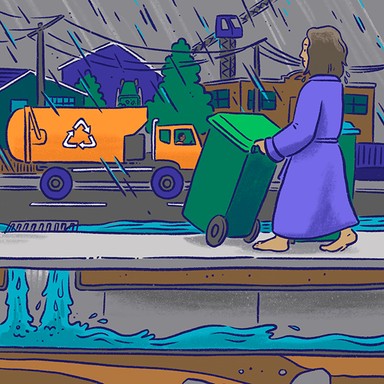
South Wairarapa District Council

Rates and revenue
The work of local government is funded mainly by property taxes in the local area, known as rates. This makes up around 60% of council expenditure, with the rest coming from user charges, investment income, regulatory fees and roading subsidies. Councils can also borrow money to spread the cost of large investments such as infrastructure over a longer period of time.

Rates and revenue
The work of local government is funded mainly by property taxes in the local area, known as rates. This makes up around 60% of council expenditure, with the rest coming from user charges, investment income, regulatory fees and roading subsidies. Councils can also borrow money to spread the cost of large investments such as infrastructure over a longer period of time.
Review current legislation around targeted rates. Aim to decrease rates exposure for lower income people and pensioners.
Explore options to decrease rates for new passive homes to encourage responsible development.
Financial management – ensure that vital infrastructure is prioritised. Build in-house staff expertise or source local contractors.
Hold developers financial accountability to carry out projects. Ensure that new developments that affect the community, are notified.
Keep council investments publicly owned. Operate a system where approval is sought at a full council for non essential costs.
Look into how rates are possibly affected by the implementation of the Three Waters reforms and see if savings can be made.
Reevaluate vanity projects versus necessary infrastructure upgrades such as drainage and footpaths.
Investigate the potential to use local contractors more often.
Greater accountability regarding rates money spends.
Challenging and comparing costings from third parties.
Focusing on what's important.
Review financial records looking for non essential spend, consultant costs and wastage impacting on rates rises.
Be proactive and open to sensible council investment that reduces reliance on rates and rates increases.
Actively review and refresh internal council operations.
Review current legislation around targeted rates. Aim to decrease rates exposure for lower income people and pensioners.
Explore options to decrease rates for new passive homes to encourage responsible development.
Financial management – ensure that vital infrastructure is prioritised. Build in-house staff expertise or source local contractors.
Hold developers financial accountability to carry out projects. Ensure that new developments that affect the community, are notified.
Keep council investments publicly owned. Operate a system where approval is sought at a full council for non essential costs.
Look into how rates are possibly affected by the implementation of the Three Waters reforms and see if savings can be made.
Reevaluate vanity projects versus necessary infrastructure upgrades such as drainage and footpaths.
Investigate the potential to use local contractors more often.
Greater accountability regarding rates money spends.
Challenging and comparing costings from third parties.
Focusing on what's important.
Review financial records looking for non essential spend, consultant costs and wastage impacting on rates rises.
Be proactive and open to sensible council investment that reduces reliance on rates and rates increases.
Actively review and refresh internal council operations.
Mayor
Compare the mayoral candidates in your area
Local council
Compare the candidates for your city or district council
Regional council
Compare the candidates for your regional council
Local board
Compare the candidates for your local or community board







